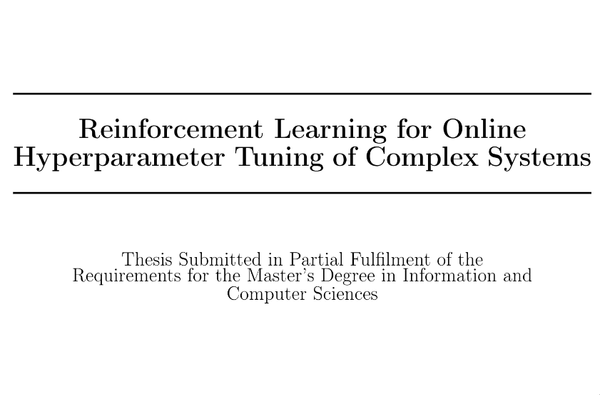Bessel's Correction

Short proof of why the maximum likelihood estimator (MLE) of the variance is a biased estimator.
When we measure the variation of our random variable (r.v.) with respect to the sample mean, we are acting as if there was an additional sample in the average, thus removing a degree of freedom and skewing the result towards less variance.
Conversely, the MLE of the variance with respect to the true population mean is unbiased. This can be seen in the factor n-1/n which tends to 1 as the sample mean reaches the true population mean.
In other words:
In other words:
$$ \sigma_{MVU}^2 = \frac{n}{n-1} \sigma_{ML}^2 $$
$$ = \frac{1}{n-1} \sum_{i=1}^n (x_i - \mu_{ML})^2$$
Full proof:
$$ \mathbb{E}[\sigma_{ML}^2] = \mathbb{E}[\frac{1}{n} \sum_{i=1}^n(x_i - \mu_{ML})^2] $$
$$ = \color{red}\mathbb{E}[\sum_{i=1}^n x_i^2] \color{black} -
\color{blue}2 \mathbb{E}[x_i \mu_{ML}]\color{black} +
\color{green}\mathbb{E}[\mu_{ML}^2] \color{black}$$
$$ = \color{red} \frac{1}{n} \sum_{i=1}^n \mathbb{E}[x_i^2] \color{black} -
\color{blue} \frac{2}{n} \mathbb{E}[x_i \frac{1}{n} \sum_{j=1}^n x_j] \color{black} +
\color{green} \frac{1}{n^2} \mathbb{E}[(\sum_{i=1}^n x_i)^2]\color{black}$$
$$ = \color{red} \frac{1}{n} \sum_{i=1}^n (\sigma^2 + \mu^2) \color{black} -
\color{blue}\frac{2}{n} \mathbb{E}[x_i^2 + x_i \sum_{j \neq i} x_j] \color{black} +
\color{green}\frac{1}{n2}\mathbb{E}[\sum_{i=1}n x_i^2 + \sum_{i \neq j} x_i x_j]\color{black}$$
$$ = \color{red} \sigma^2 + \mu^2 \color{black} -
\color{blue} 2(\frac{1}{n}(\sigma^2 + \mu^2) + \frac{n-1}{n} \mu^2)\color{black} +
\color{green}\frac{n}{n^2} (\mu^2 + \sigma^2) + \frac{n^2 - n}{n^2} \mu^2 \color{black} $$
$$ = \frac{n-1}{n} \sigma^2 $$
Given that:
$$
\begin{cases}
\mathbb{E}[x_i x_j] = \mu^2 + \sigma^2 & \text{if $i=j$}a
\mathbb{E}[x_i x_j] = \mu^2 & if \ i \neq j
\end{cases}
$$




